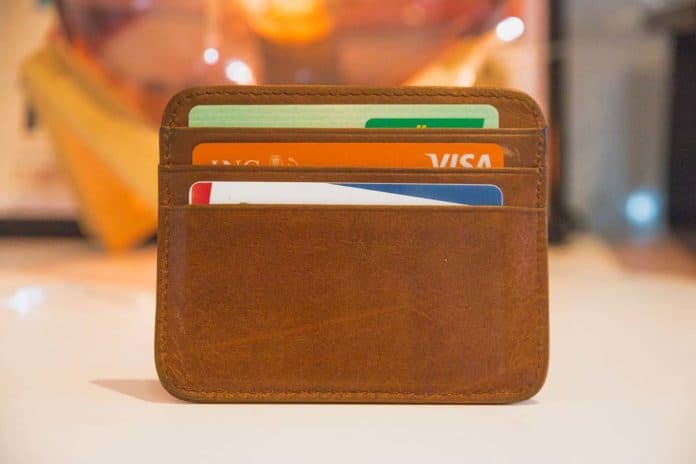Debt is a global issue. And it’s no longer news that tons of Americans are seriously drowning in credit card debt. Things were much better economic-wise before the recession. But that is not to say there were no debts. The recession only made it worst. It plunged tons of Americans into credit card debt.
Many experts believe that the country’s economy is on the road to recovery. But we all know that such forecasts always look good and attainable on paper. Many Americans are still struggling to clear off their credit card debts.
Some states boast the highest number of credit card debtors in the country. And according to the New York Federal Reserve, consumers’ card credit is almost 4 trillion dollars.
Keep reading for more information on credit card debt in the United States of America.
Top 10 States With High Credit Card Debt
Alaska boasts the highest average credit card debt in the United States of America. Alaskans’ average credit card debt is $10,685.
The next state is Virginia. Alaskans’ debt is only $1500 higher than Virginians’.
Consumers in Virginia have an average credit card debt of $9,120. And this is surprising, given that over half of the wealthiest states in America are on the East Coast. These include Washington, Virginia, Alaska, California, among others.
Texas is another state to make the list of states with hefty average credit card debt. As of the time of writing, Texas boasts the third-highest card debt, averaging $9,100.
Maryland is the fourth state with the highest credit card debt in the United States of America. Its card debt averages $9,009.
Here are the top 10 states with high card debt:
| States | Total Credit Card Balance (USD) | |
| 1. | Alaska | $10,685 |
| 2. | Virginia | $9,200 |
| 3. | Texas | $9,100 |
| 4. | Maryland | $9,009 |
| 5. | Connecticut | $9,000 |
| 6. | New Jersey | $8,959 |
| 7. | Georgia | $8,738 |
| 8. | New York | $8,510 |
| 9. | Colorado | $8,463 |
| 10. | Hawaii | $8423 |
Top 10 States with Low Credit Card Debt
Having low credit card debt means a lesser financial burden on one’s shoulders. And considering the high-interest rate on such a debt, maintaining a low credit is a wise financial decision.
Consumers in most states have managed to keep their card debts low, despite the numerous wants they may have.
Iowa consumers deserve praise for maintaining the lowest average card debt in the United States. Consumers in this state have just $6,726 in debt on their credit cards.
Wisconsin is another fortunate state with low credit card debt. In this state, consumers boast an average credit of $6,737, which is only $11 more than Iowans’.
It is obvious that consumers from the Midwestern regions surely know how to maintain low credit card debts. North Dakota is another Midwestern state with an impressively low credit card debt, which averages $7,068.
Here are the top 10 states with low card debt:
| States | Total Credit Card Balance (USD) | |||
| 1. | Iowa | $6,726 | ||
| 2. | Wisconsin | $6,737 | ||
| 3. | North Dakota | $7,068 | ||
| 4. | South Dakota | $7,199 | ||
| 5. | Michigan | $7,382 | ||
| 6. | Indiana | $7393 | ||
| 7. | Kentucky | $7,428 | ||
| 8. | Mississippi | $7,433 | ||
| 9. | Montana | $7,444 | ||
| 10. | Idaho | $7,518 | ||
As you can see, most states with low credit card debt are from the Midwestern region. The only exception on the above list is Montana.
Now, why does the Midwest boasts the lowest creditors in the United States of America? Well, numerous factors come into play, which are personal and on a state level. On a personal level, most individuals in these Midwestern regions aren’t comfortable admitting to others that they have a card debt, according to a report by MarketWatch.
So, it’s safe to say that consumers in this part of the country feel embarrassed admitting to credit card debts. And that alone keeps them in check.
The costs of living, including the economy are again, two powerful reasons why Midwesterners boasts low credit card debts.
Is Moving To The Midwest As A Credit Card Debtor A Great Move?
Ideally, anyone who has a card debt to pay might consider making such a move, given the low cost of living in some of these Midwestern regions. But such isn’t a great move, as it won’t change anything. Why? The salaries in states with a low cost of living are often low.
So, if you’re earning a good salary where you currently live, there’s no point running away. And remember that credit card debt doesn’t go away when you move into another state. It follows you wherever you go.
Instead of changing your state of residence for the sake of cutting down on your expenses and pay off your debt with ease, seek other effective ways to reduce your credit card debt.
How You Can End Your Hefty Credit Card Debt Regardless Of The Crisis
Becoming debt-free isn’t going to be an easy feat, but it’s still possible. The ingredients you need to succeed in such a mission are determination and hard work. With the current economic climate and global pandemic, you need to act smarter than you have been in the previous years to end your debts. Here are some critical steps you need to take.
Develop a full-proof repayment plan:
Considering the high-interest rate on credit card debts, it would be best to conclude repayment as quickly as possible. Create a debt repayment plan if you haven’t done so. And aim to pay more than the minimum required amount.
Let’s assume you’re above the median household income in your state, and you can commit 15 percent of your income to service your credit card debt. With consistency in payment, you can clear off your debt in less than 15 months and become a free man or woman.
So, try to motivate yourself to clear off your debt as quickly as possible by creating a plan.
Channel unused cash into your credit card debt:
The global pandemic has forced everyone to change their routine. No more eating out and no one could travel during the lockdown. And since you aren’t going to be eating out or embarking on those expensive trips, you may have some unused cash to spare.
If you want to pay up your debt quicker, start channeling such unused cash to service your debt.
Create a budget:
Just because you have a debt to pay doesn’t mean you won’t eat or do some extra shopping. You can, but for that to happen, you would need a budget.
Since you know your monthly income, plan your budget around it. And ensure you stick to it for the entire duration. Do not spend way past your budget.
Having a budget would also help you to pay up your debt and take care of other expenses. You won’t be stranded in neither of both commitments.
Focus on one card at a time:
Take one step at a time; that’s the message. If you have credits on four cards, focus more effort on one, perhaps the one with higher interest.
Mind you, focusing on one card doesn’t mean you should forget the rest for a while. If you have four cards with debts, pay above the minimum required amount on one card and pay the others’ minimum amount. Whenever you finish paying the credit card debt you took as a top priority, take another and repeat the same process.
Cut down on your expenses:
Having a credit card debt isn’t one of the things an individual should be proud of. Don’t forget card debts boast one of the highest interest rates.
So, if you’re fond of spending unnecessarily, make an effort to end such a habit. Instead, save money to pay above the required amount. Delay gratification won’t affect your life adversely, in any way. Besides, you only have to endure for a while.
Convert unused rewards:
If you have managed to amass some rewards credit card, now is the time to channel them to repay your debt. Piling unused points for a planned vacation won’t be the best decision, particularly with the current economic climate.
The reasonable thing you can do with your unused points is to convert them to cash and pay your debt. There would be enough money to make any planned trip after clearing off your debt.
Ask your creditors for assistance:
The COVID-19 pandemic has created a lot of uncertainties in the business world. Many individuals have lost their jobs and some are battling with hefty credit card debts.
Aware of the current economic challenges, many lenders and major credit card issuers have rolled out a series of programs to help consumers. These range from waiving late payment fees, lowering interest rates, reduced or deferred payments, and so on.
So, contact your card issuer about ways they can assist you. Most of them may ask you to file your request online or via an app. You can meet them in person as well.
Approach a reputable card counseling agency:
Don’t wait until you’re out of month before approaching a credit card counseling agency. Do so before your time for payment elapses. Most of these agencies are not-for-profit, but the work they do is incredible. They operate several debt management programs that help people to obtain low-interest rates and improved payment terms from their creditors.
Credit Card Debt: Is It Good Or Bad?
Debt is both good and bad. It all depends mainly on how one uses the borrowed money. Good debt can increase an individual’s net worth. Let’s assume you borrow to invest in a business or acquire equipment that made you more efficient in what you do.
These are the kind of debt you can call good debt. Another example is borrowing money to buy an asset that doesn’t depreciate. Examples include stock, bonds, land, buildings, and others.
Debt is bad when you’re borrowing to purchase an asset or spend on something that won’t bring money or appreciate. Never borrow money to acquire a depreciating asset.
Why Are Many People Drowning In Credit Card Debt?
Once issued a credit card, it’s up to the cardholder to decide how and when to use it. No one can stop you from spending except you. And the fact that one can buy whatever one pleases and enjoy a grace period for repayment makes it difficult for many individuals to exercise restraint.
Today, many individuals are drowning in hefty credit card debts. And the worst part is that once you incur so much debt, repayment is always the most challenging part.
Below are the reasons more and more people are becoming indebted.
Opportunity to overspend:
The one primary reason why many individuals get into debt is that they spend way more than their earnings. They do not even think about the high-interest rate on credit card debts before spending. If they do, then we won’t be having so many debtors around.
The grace period before repayment begins makes such debts appealing to many borrowers.
A Handy Tip: To avoid credit card debt or getting stranded, never spend above your earnings.
Card-reward tricks:
Credit card issuers know just how to motivate customers to increase spending. One of the ways they achieve this is by offering cash backs and several perks.
Only a greedy person falls for such a worthless trick. Compare the interest rate and additional charges you need to pay when you incur credit card debt and you will see that the rewards credit card companies are offering is nothing.
So, don’t fall for such tricks. Only use your credit card when necessary, not because of a reward the company has promised you for using your cards multiple times.
Keeping many credit cards:
Getting multiple cards is super easy. The major problem is being able to manage all of them. One could easily forget to pay your debt and incur hefty late payment fees that will drown you in more debts.
So, if you can’t manage your cards properly because of your tight schedules, it would be best to keep just one credit card.
Conclusion
Many Americans are swimming in credit card debts, and you can see why. They’re not concerned about the high-interest rate they have to pay. However, if you exercise restraint while using your credit card, you won’t find yourself in any debt mess.
We have highlighted tips on ways you can pay up your debt faster and become debt-free. We hope you found this information helpful.












